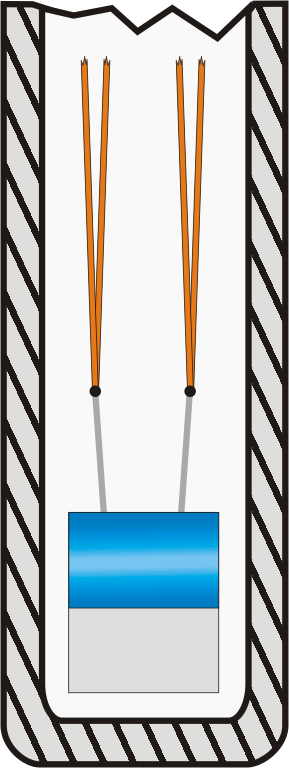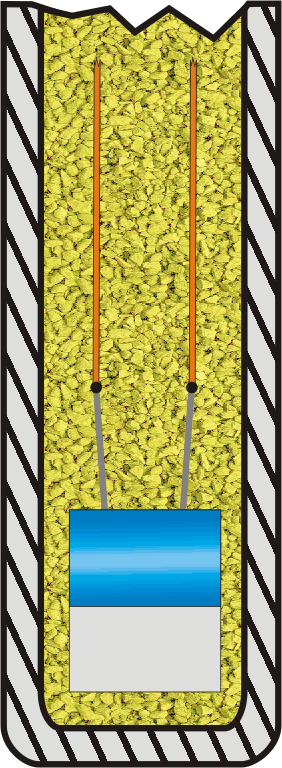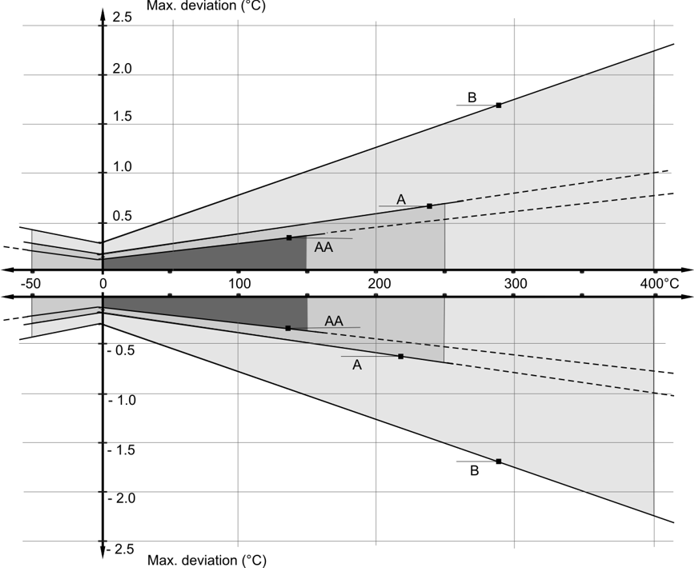Sensor class |
||||||||||||||
|
Pt100 temperature sensors for industrial temperature measurement are mainly produced in two basic forms. The so called thin flim sensors and the round ceramic sensors.
|
||||||||||||||
|
The Pt100 is fitted into a measurement insert. The measurement accuracy is dependent on various factors:
|
||||||||||||||
|
|
|
|
||||||||||||
| Pt100 temperature sensors | ||||||||||||||
|
Pt100: thin film Advantages: |
|
|
||||||||||||
|
|
|
|
||||||||||||
|
Ceramic Pt100 Advantages: |
|
|
||||||||||||
|
|
|
|
||||||||||||
|
Measurement accuracy sensor |
||||||||||||||
|
Tolerance classes: For Pt100 resistance thermometers two accuracy classifications are laid down in the IEC 60751:
Above these there are also higher accuracy classifications for special applications:
Note |
||||||||||||||
|
|
||||||||||||||
|
Measurement accuracy for Pt 100 thin film TF:
1) |t| = absolute value of the temperature in C° |
|
|
||||||||||||
|
|
||||||||||||||
|
Measurement accuracy for Pt 100 wire wound WW:
1) |t| = absolute value of the temperature in C° |
||||||||||||||
|
Connection modes |
||||||||||||||
|
2-wire: |
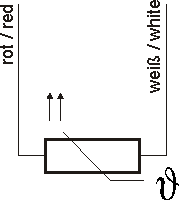 |
|||||||||||||
|
3-wire: |
 |
|||||||||||||
|
4-wire: |
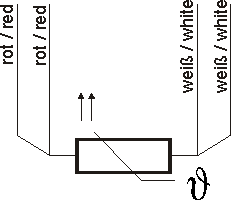 |
|||||||||||||
Temperature inserts of Endress+Hauser by comparison
|
Sensor type |
Construction |
Application temperature range |
Dual sensor |
Best accuracy that is available for order by default |
Long term stability |
Best possible response time4) |
Vibration resistance5) |
|
|
RTD thin film (TF) |
|
-50 °C to +400 °C |
yes, on request |
Class AA (formerly
1/3 DIN B) according to |
++ |
+ |
+ |
+ |
|
RTD thin film (TF) |
|
-50 °C to +200 °C |
no |
Class A according to IEC 607512) |
+ |
+ |
++ |
+ |
|
RTD wire wound |
|
-200 °C to +600 °C |
yes |
Class AA (formerly 1/3 DIN B) according to |
++ |
+ |
+ |
0 |
|
Thermocouples (TC) |
|
-200 °C to +1800 °C |
yes |
Example for type K: |
0 |
0 |
++ |
++ |
|
|||||||||||||||||||||||||
